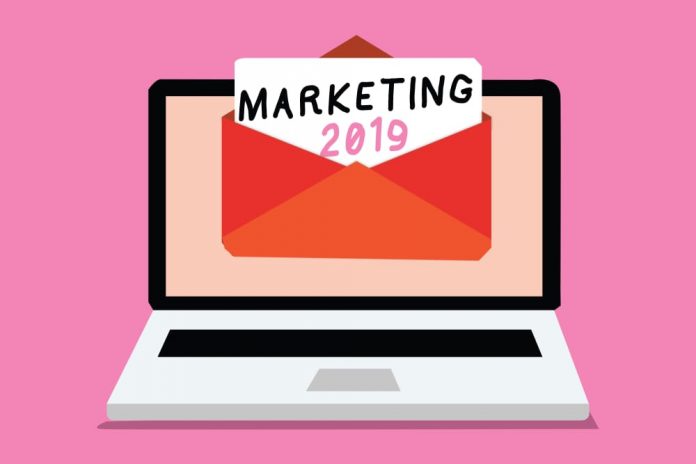
In Partnership with Simply Business
4th in a series of articles exploring how to make 2019 your business’s best year yet.
By Rieva Lesonsky
Last week we talked about the innovations in local marketing small business owners need to adopt to be successful in 2019. Now, we’re going to discuss other marketing trends that are essential to your success.
But first, this is a good time for you to access your marketing approach. Too many small businesses silo their marketing efforts. They have plans for SEO and/or email marketing or social media, but rarely connect them all. Your marketing should not be in silos. You need a holistic, integrated marketing plan that includes the components we talked about last week (websites, mobile solutions, SEO and voice search) and the ones we’ll discuss below (email marketing, social media and review and rating sites).
The point of marketing is to:
- build brand awareness
- explain & inform
- attract customers
- form relationships
- improve customer engagement
All these contribute to building trust between you and your customers which hopefully results in increased sales.
Social media skyrockets
For a medium that didn’t exist 20 years ago, social media is now ubiquitous. Statista reports 77% of Americans use social media, so it’s a great way to reach new and interact with your current customers. For retailers, social media is 3X more likely to drive visits from non-customers, according to Adobe’s State of Digital Advertising 2018.
With so many social platforms, it’s easy for small business owners to get overwhelmed when first crafting an effective social media plan. But it doesn’t have to be complicated. Start by defining what you want to get out of social. Do you want to:
- Build awareness?
- Attract new clients?
- Connect with current customers (build relationships)?
- Drive traffic to your website/store/restaurant/business?
- Learn industry, business & consumer trends?
- Provide customer service?
- “Spy” on your competitors?
- Meet “influencers” (media & industry experts)?
Social media marketing can help you do all those things (and more). When choosing the best social platforms for your business, start where your customers are—what social channels are they using? Then, figure out which social platforms your competitors use. Although you may never end up engaging on more than one or two social platforms, you should create profiles on all relevant sites, so someone can’t use your business name.
Each social medium has its own claim to fame. Facebook is the largest; LinkedIn is considered the best for B2B businesses; Instagram is the fastest-growing platform and the best way to reach younger generations; Pinterest is great for selling products; and Twitter is the best place to connect with journalists.
Once you establish your social presence, create a company social media policy. What will you talk about? What do clients/customers want from you? Who will handle it? (Don’t say interns—that’s a recipe for disaster). How often will you post? Consistency is key to achieving your goals. Remember social media works by getting other people to help spread your message. It’s essentially the 21st-century version of word-of-mouth marketing.
How do you rate?
Rating and review sites are controversial among many small business owners. They don’t like the exposure negative views can bring. And they’re not sure it’s worth it. A survey of SMBs from Bank of America showed 51% don’t consider social media reviews and online ratings to be an important part of their businesses. However, about 88% of consumers trust online reviews as much as personal recommendations from people they know. So, you need to get listed on ratings and review sites. Yelp tops the list. But there are various other sites, many industry specific, that consumers check before contacting a business. Houzz, Home Advisor and Angi are important for home services businesses. Also check out the top local directories from Search Engine Bay. Many cities have niche review sites; check to see if yours is one of them.
Like local directories, you should optimize your listing on review sites by adding photos, directions or maps, coupons and deals. It’s important you monitor your reviews and quickly (and politely) respond to negative reviews. Don’t ever get involved in a public fight with a customer—no matter how harsh the review.
Email is #1
Email has generated the highest ROI for marketers 10 years in a row, according to Campaign Monitor. For every $1 spent, email marketing generates $38 in ROI. Of course, the key to success in email marketing is getting consumers to open your emails. Emails with personalized subject lines are 26% more likely to be opened, and 57% of marketers say personalization is their most effective email marketing tactic.
The case for email marketing is hard to argue with. According to WordStream:
- 77% of people prefer to get promotional messages via email
- Consumers who purchase products through email spend 138% more than those who don’t get email offers
- For retailers, email marketing is the greatest driver of customer retention
- 320% more revenue is attributed to welcome emailsthan other promotional emails
Your emails need to be mobile-friendly, since, per SuperOffice, 61% of all emails are opened and read on mobile devices, and 70% of consumers delete emails that aren’t optimized for mobile. And yet, only 11% of email campaigns use responsive design to optimize their emails.
Using these marketing tools enables you to better engage with customers and clients and build lasting relationships to help you succeed in 2019 and beyond.
Be sure to read our Countdown to 2019 posts on managing cash flow, managing your employees’ time and embracing local marketing.
Marketing trends stock photo by Artur Szczybylo/Shutterstock







